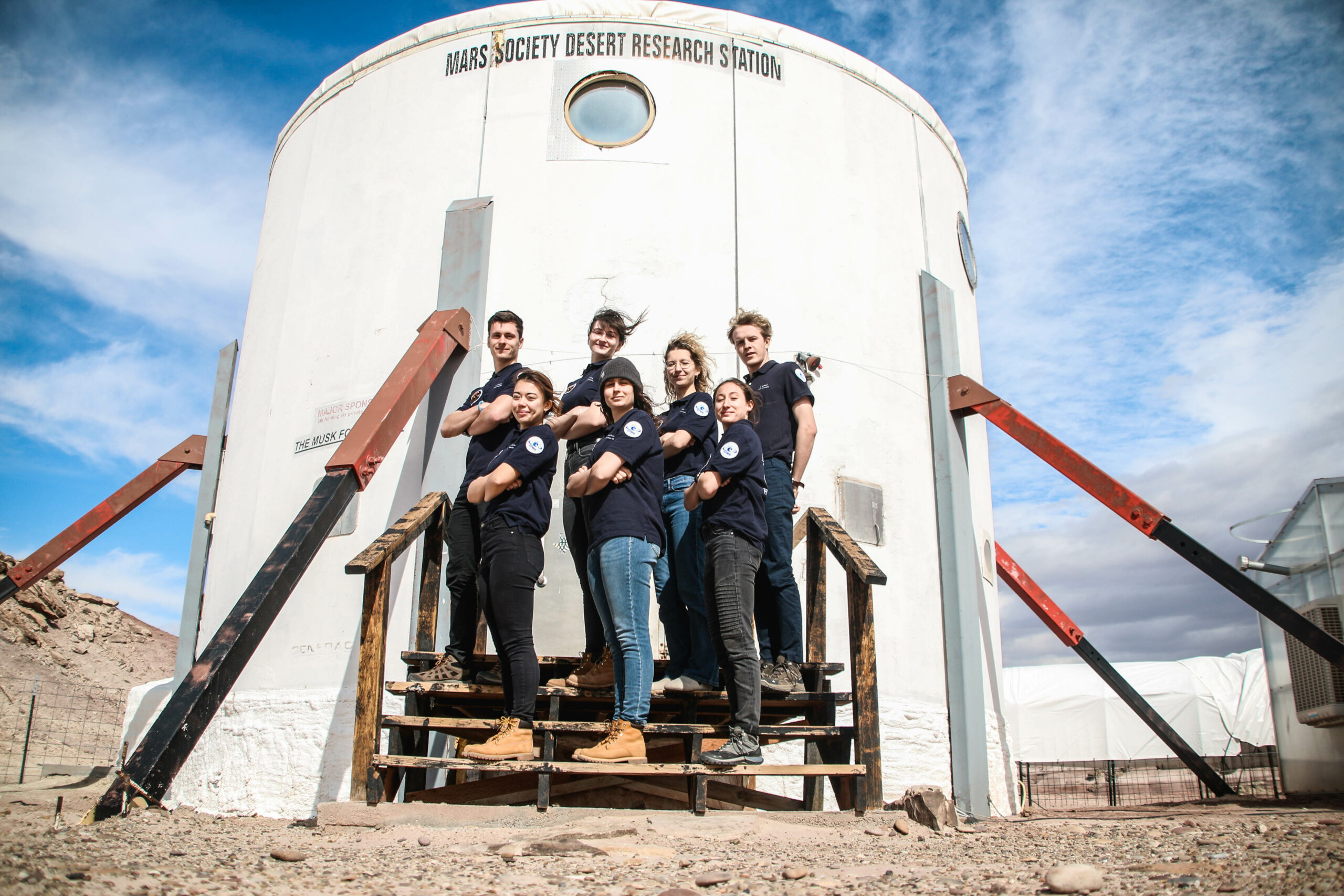Sol 9 – A Hollywoodian movie
Author: Nicolas Wattelle
We are now at a point where the end of our mission is as far as its beginning. It is a strange feeling; this is one of the first times where we concretely think about the “end” of our more than a one-year-long project. But be reassured, it does mean that we do not keep up the good work!
Valentine is a clever strategist. Our HSO, for Health and Security Officer, takes care of us every day with sports sessions, proposing sophrology exercises, keeping an eye on our personal physiological data… She is like the guardian angel of each of us here, and it is great to have her by our side. But this morning, she organised an exercise of rescuing an injured astronaut, but in order to provide great data to analyse, she developed a scenario, Hollywood-worthy.
All began during yesterday’s eve, where she separately took each member of the crew to explain their role in testing a rescue protocol. She told everyone, except Cerise and Léa, that Elena would simulate a fall and an injury, and everyone one would have to abide by the protocol. The aim was to measure different parameters such as efficiency, time to secure the victim, and physiological data from Martianauts living the situation in EVA.
But in reality, she told the true scenario to Léa (who had to stay in the Hab during the EVA) and Cerise (who was Mathéo’s buddy during the EVA): Valentine herself, was meant to simulate being the victim before Elena did. Like this, the situation was more likely unforeseen for most of us and would be more realistic, while keeping the situation under control if something went wrong. In this case, Léa would have been able to inform Marine (today’s Habcom) and same with Cerise and Mathéo. It was very clever.
Everything went as planned, and after the protocol was applied, Valentine revealed the truth to the Marine, Elena, and Matheo who couldn’t be sure of what had really happened (even if Elena seemed to have understood quickly…). And we are now waiting for the data to be processed. This was a very exciting morning, and we had a great time talking about it at lunch!
For the work that has been done inside the station today, we made our second session of ultrasound with the Sonoscanner device and CNES protocol. Since last week, we received some adjustments from researchers, and it was useful. I think everyone improved their “image capture skills”, finding on average one organ more than last time.
On this subject, Elena is really impressive for an engineering student, she made twice a perfect shot! She may begin a conversion… The whole crew seems to appreciate this experiment and is really involved in giving their feedback and feelings about the protocol. This is a pleasure working in these conditions!



You must be logged in to post a comment.